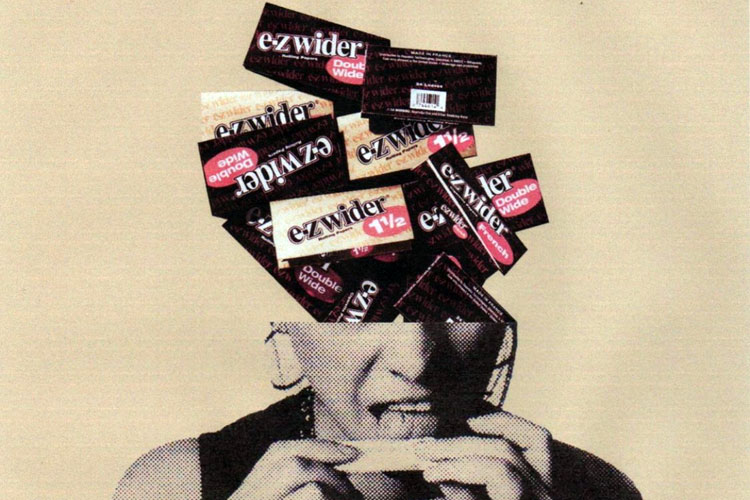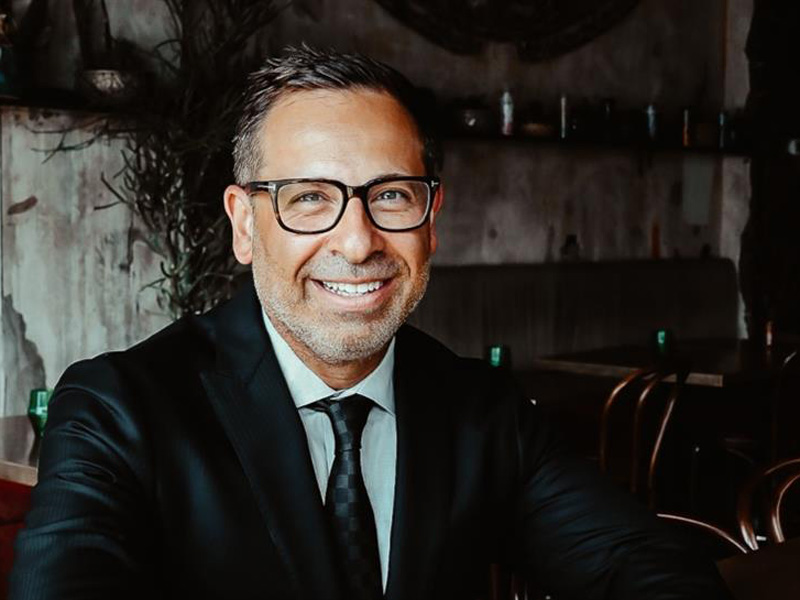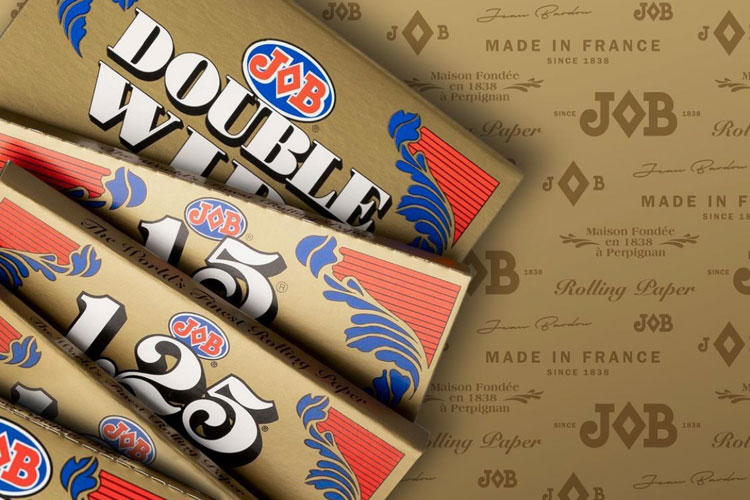
Building on a formidable heritage, Republic Brands is keen to capitalize on the latest market trends.
By George Gay
Here’s a challenge. Try to figure out what “category” was being referred to when, during an interview with Tobacco Reporter in August, a company executive said, “I think it is the most exciting time to be in the category in the U.S.”
If I didn’t know the answer to this puzzle, I think I would have guessed at something like nicotine pouches. I certainly wouldn’t have gone for a combustible product. But the executive was talking about the roll-your-own category in general, and, in particular, about Republic Brands, which in July changed its name from Republic Tobacco. “It’s rare that you are able to become part of a company like Republic with such great ownership, such iconic global brands and an amazing supply chain in a category that is becoming more and more meaningful in the U.S.,” said Paul Marobella, the former chairman and CEO of Havas Creative in North America who joined Republic as president and chief marketing officer on July 1, having previously acted as a consultant. “And I know that everybody here is really excited about our future. You’re going to see some great new products from us—some innovation. I think people will come to know the Republic Brand name more than they knew Republic Tobacco in the past: We are going to focus more on that. And we’re building a great place to work and a place that really creates iconic brands. That is the spirit here at the moment.”
Marobella was speaking mainly about the U.S. market, though some of his underlying ideas have wider resonance, which is appropriate given the global reach of Republic. The company, owned by Donald Levin, claims to be the largest RYO company in the world. It has subsidiaries in Canada, continental Europe and the U.K. operating under the name Republic Technologies, seven manufacturing facilities across North America and Europe, and a sales presence in 120 countries.
But for the moment, the focus is on the U.S. where Marobella has taken on the responsibility for aligning Republic’s brands and brand marketing with specific consumer segments across the U.S. He exudes enthusiasm for this challenge, and it is easy to get swept along by such an experienced brand marketer talking of consumers choosing new pathways through changing cultural environments with products that combine brand heritage with sustainable materials.

A Growing Market
But he has a point. If you step back and take a moment to reflect, there is clearly something going on here—in the U.S.—and now. The first thing that should be kept in the background is the size of the U.S. market. This was brought home to me when Marobella mentioned E-Z Wider, one of the most recent brand additions to the Republic portfolio of rolling papers, acquired along with the Joker brand by Levin about three years ago. One of the areas where E-Z Wider has a strong presence comprises the Eastern Seaboard of the U.S., which, the internet tells me, has a population of about 118 million people, slotting it into about 12th position on a list of the most populous nations of the world. The plan is to take E-Z Wider national, as one of the company’s growth and emerging brands.
Importantly, too, there are signs that within the huge U.S. market—the total population is about 328 million—the RYO sector is growing. Hard data on the sector is more difficult to come by than is that on factory-made cigarettes, for instance, but Marobella said Republic was seeing growth both in the incidence of people rolling their own and making their own with papers, cones and tubes. The cone sector, which Republic entered about three years ago, was particularly vibrant, he said, before adding that bamboo cones and bamboo papers were “flying off the shelves.” At the same time, indirect evidence for such growth is being provided, too, by an increase in new competitors and new brands entering the market and by what Marobella described as the excitement currently evident in the segment at trade shows.
Another important point to keep in mind is that, whereas the market for factory-made cigarettes, which are locked in with tobacco, has nowhere else to go, the market for RYO and make-your-own accessories, such as rolling papers, cones and tubes, while heavily underpinned by tobacco consumption, is expanding beyond tobacco. Marobella is careful to emphasize that Republic wants its products to be used only with legal materials, naming tobacco, hemp, CBD and herbal products generally. But there is no getting away from the fact that smoking marijuana is becoming legal in parts of the U.S. and is already so north of the border, across Canada. And Marobella conceded that, in respect of marijuana, U.S. federal legalization would be great for “the RYO category in which Republic’s brands play such an important part.”
What I wrote above about factory-made cigarettes having nowhere else to go might be taken to suggest that the manufacturers of factory-made cigarettes also have nowhere they can go beyond tobacco. But such a suggestion would be misleading. Leading manufacturers in this field are making huge efforts to move away from combustible tobacco toward all manner of new-generation products, and, given their initial success is maintained, it is conceivable their departure will leave behind a considerable vacuum, part of which could be filled by RYO products—initially tobacco based, but later, perhaps, underpinned by other smoking materials.
And on top of these marketing opportunities for RYO brands, you can add emerging retail possibilities, such as ecommerce. Marobella told me that new highly innovative delivery services were coming on line in the U.S.: services such as GoPuff, which will deliver to your house in 25 minutes or less. Despite its name, GoPuff delivers a huge array of products that happens to include a wide range of tobacco and nicotine goods from charcoal heaters for hookahs to rolling papers to e-liquids. “You have consumption lounges being legalized in certain cities,” added Marobella. “Las Vegas is one where you will be able to consume herbal products on-premise. You have subscription delivery boxes in which papers and cones are sometimes included.”

A diverse consumer base
Marobella added, however, that while more and more routes were being opened to the consumer and while it was important for Republic to keep abreast of these new opportunities, the company’s core business was with, and would remain with, distributors, wholesalers, convenience stores, c-gas stations and smoke shops.
I guess that, to a certain extent at least, the route to the consumer needs to be allied with the type of consumer you are aiming at. So who are these consumers? Well, the traditional RYO consumer is still a male manual worker who likes to roll tobacco and smoke without having to take out a loan, and that is unlikely to change greatly soon. But, partly because of new opportunities provided by herbal materials, more women are entering the RYO category, and, in fact, some estimates have women accounting for nearly 40 percent of the RYO market attributed to herbal material use. In part, too, the RYO category has opened itself up to new entrants with products such as cones that don’t require people to be skilled in the art of rolling. And then there is the question of cultural changes. “I think that in the U.S., people are seeking to find moments to themselves, they are seeking to relax, seeking to enjoy the little things in life more and more because of what is happening in our world,” said Marobella. “And through our research, we have seen that people use our products to help them relax.”

Of course, to satisfy the needs of a diverse consumer base, you need a wide-ranging portfolio of products, and Republic seems to have just that. The company was started in 1969 by Levin, who at that time owned one of the most famous smoke and head shops in the U.S., Adams Apple in Chicago, and a smoking accessories business operating under the same name. He no longer owns the shop but still owns the brand name, which is used for the company’s ecommerce business selling on Amazon, and which appeared as recently as August in a TMA trademark report relating to RYO-related and MYO-related products. Since those early days, Levin has been acquiring and building a formidable brand portfolio, which includes OCB, said to be one of the largest global brands and one that is the company’s all-natural brand, carrying the tag line “One with Nature.” OCB, like many rolling-paper brands, comes in a dizzying number of versions, but Marobella says it is probably the company’s most expansive. “We have a whole line of different sizes, fibers, some that are made of flax, some that are made of wood pulp,” he said. “OCB has organic hemp, bamboo; we have a virgin unbleached paper and cones as well.”
While OCB is about being one with nature, the JOB brand, which has been in existence since 1838, is said to be about creativity—you’ve almost certainly seen the fine print posters—and cultural relevance while E-Z Wider, apparently named after the film, Easy Rider, is Republic’s outlaw or rebel brand.
It is not possible to list all the brands and, especially, all the product styles within each brand, but I should point out that, despite such a large existing portfolio, as is mentioned at the start of this piece, there is more to come. Marobella wasn’t going to be drawn on specifics, but he did say that, across Republic’s portfolio, there would be more products made of organic hemp, which, by the way, is sourced from Champagne, France, from the same soils that produce fine champagnes. “You’ll start to see some unique sizes of products, such as cones; you’ll start to see some brands that are targeted at very specific demographics and consumer segments in the U.S.,” he said. “You might see some different colors of papers, some different patterns of papers that would appeal to a different 21+ demographic in the U.S., maybe a female demographic. There is a lot of innovation that is happening. We want to be on the leading edge of that.”











